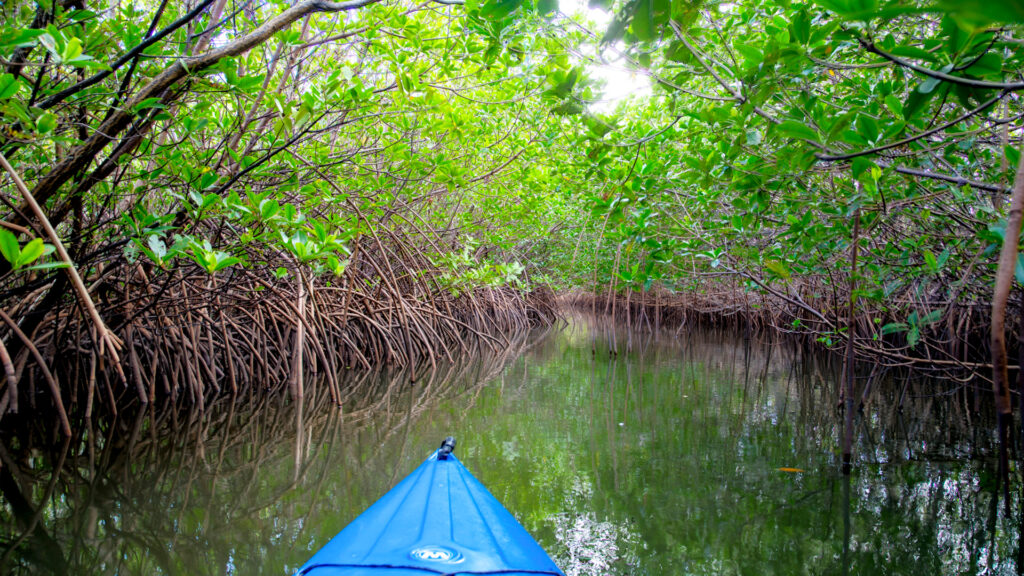By Wendy Oliver and Susan Panella
We love Florida because of its unique environment. Its amazing ocean and coasts, unrivalled beaches, teeming coral reefs, iconic Everglades, incredible climate – it’s the glorious nature of Florida that draws people here and makes them call it home.
But sometimes, we can love something too much.

Head in from the Atlantic through Jupiter Inlet, and turn north into the Intracoastal Waterway and South Indian River Lagoon. To the west is historic Cato’s Beach, where generations of Palm Beach County residents have picnicked and snorkeled. Keep going under Cato’s Bridge, and there sit a few dwindling strands of mangroves and seagrass banks which were once vibrant and teeming.
This spot, just north of Cato’s Bridge on the east side of the Intracoastal, has become a party zone, filled with boats on the weekends. While we would never begrudge anybody a good time, the sad result of decades of boat traffic, anchoring, rising seas and compromised water quality is that what once were thriving and beautiful mangrove islands and seagrass banks are now mostly barren and unproductive sandy bottom. The impact of thousands of stomping feet and boat hulls, coupled with excessive wake from the Intracoastal and too much commotion in general, has all but killed these islands.
We desperately need these mangrove islands and seagrass banks. Mangroves provide important coastal buffering services protecting our shores from wave action, and they form critical nursery habitat for juvenile fish. Mangroves are critical carbon sinks, pulling carbon out of the atmosphere and locking it away, helping to mitigate against a changing climate.
Seagrass produces important habitat as well as carbon sequestration, and it also is the primary food source for Florida’s most charismatic inhabitant – the Florida manatee. An individual manatee eats 10% of its body mass in seagrass every day, which equates to about 100 pounds per individual. We need our seagrass banks intact and healthy to sustain robust manatee populations.
We are working alongside scientists, environmental engineers and policymakers to find solutions for protecting the islands north of Cato’s Beach Bridge. We are working to deploy science-based solutions that will restore mangrove and seagrass habitat, and we know that lessons learned here in the shadow of the Jupiter Inlet Lighthouse can be applied elsewhere across the Sunshine State. And what we need on top of all of that is to harness the passion of the citizens of villages as small as Tequesta, of counties as big as Palm Beach, and of residents and visitors statewide to care about protecting the iconic natural beauty that makes Florida so lovely.
The story of Cato’s Bridge is a story just about as old as Florida itself. And it’s a story about people simply loving Florida to death. But it’s something that all Floridians need to engage on, and it’s all hands on deck to protect our mangroves, seagrasses, and splendid ocean and coasts. Now is the time to lean in and be Floridian.
Wendy Oliver is based in Palm Beach County and is program director for VoLo Foundation, a private family organization that exists to accelerate change and global impact by supporting science-based climate solutions, enhancing education and improving public health. Susan Panella is a resident of Jupiter and has been coming to the area for more than 50 years.
This opinion piece was originally published by the Palm Beach Post, which is a media partner of The Invading Sea. If you are interested in submitting an opinion piece to The Invading Sea, email Editor Nathan Crabbe at ncrabbe@fau.edu. Sign up for The Invading Sea newsletter by visiting here.



